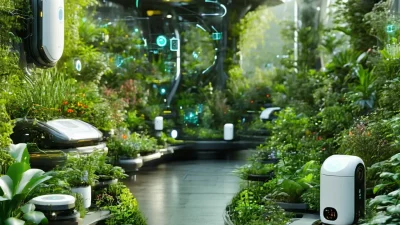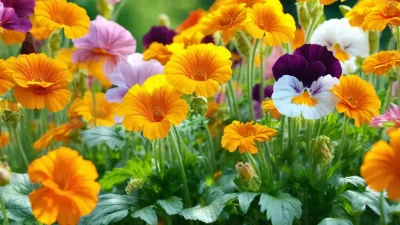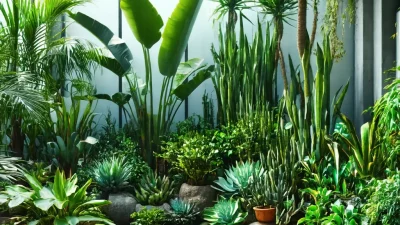How to Create a Sustainable Garden in Your Backyard
Gardening is more than just planting flowers or vegetables; it’s about creating a space that connects you with nature while minimizing your environmental impact. If you’re ready to transform your backyard into a sustainable garden, you’ve come to the right place. This guide will walk you through everything you need to know to create a beautiful, eco-friendly garden that benefits both you and the planet.
Why Sustainable Gardening Matters
Sustainable gardening isn’t just a trend; it’s a necessity in today’s world. By adopting sustainable practices, you can reduce waste, conserve water, and support local wildlife. Plus, growing your own food means you’ll have access to fresh, organic produce right in your backyard. Let’s dive into the steps you need to take to create your very own sustainable garden.
1. Assess Your Space
The first step in creating a sustainable garden is understanding your space. Consider the amount of sunlight your backyard receives, the type of soil you have, and the climate in your area. These factors will influence which plants you can grow and how you’ll manage your garden.
- Observe your yard for at least a week to note where the sun shines most intensely and where shade is available.
- Test your soil’s pH level using a simple kit from your local gardening store.
- Research plants that thrive in your specific climate zone.
2. Choose the Right Plants
Selecting the right plants is crucial for a sustainable garden. Opt for native species, as they are adapted to your local environment and require less maintenance. You should also consider companion planting, which involves growing plants together that benefit each other.
- Native plants like milkweed (for monarch butterflies) and coneflowers are excellent choices.
- Companion planting examples include tomatoes with basil or carrots with onions.
3. Prepare Your Soil
Healthy soil is the foundation of any successful garden. Avoid using chemical fertilizers, which can harm the environment. Instead, focus on building your soil’s health naturally.
- Add compost to your soil to improve its structure and fertility.
- Use cover crops like clover or alfalfa to protect your soil during the off-season.
4. Water Wisely
Water is a precious resource, so it’s important to use it efficiently in your garden. Drip irrigation and rain barrels are great ways to conserve water while keeping your plants hydrated.
- Install a rain barrel to collect water from your roof for watering your garden.
- Use mulch around your plants to retain moisture and suppress weeds.
5. Embrace Organic Gardening
Avoid synthetic pesticides and herbicides, which can harm beneficial insects and contaminate water sources. Instead, opt for organic methods to control pests and diseases.
- Use natural predators like ladybugs to control aphids and other pests.
- Making your own organic compost or using worm castings can provide a nutrient-rich fertilizer for your plants.
6. Attract Pollinators
Pollinators like bees, butterflies, and birds are essential for a healthy garden. By planting flowers that attract these creatures, you’ll not only enhance your garden’s beauty but also support local wildlife.
- Plant flowers like lavender, marigolds, and sunflowers to attract pollinators.
- Add a bird feeder or birdbath to make your garden more welcoming to birds.
7. Reduce Waste
Minimizing waste is another key aspect of sustainable gardening. Reuse materials like broken pots, cardboard boxes, and egg cartons for planters or seedling trays. You can also compost kitchen scraps to create nutrient-rich soil for your garden.
- Use newspaper or cardboard as a natural weed barrier in your garden beds.
- Repurpose old household items as unique garden decorations or tools.
8. Maintain Biodiversity
Biodiversity is essential for a healthy ecosystem. By growing a variety of plants and creating habitats for wildlife, you’ll support a thriving community of organisms in your garden.
- Plant a mix of flowers, vegetables, and herbs to create a diverse ecosystem.
- Add a small pond or fountain to provide water for birds and other wildlife.
9. Use Sustainable Tools and Equipment
Finally, consider the tools and equipment you use in your garden. Choose eco-friendly options that are durable and made from sustainable materials. You might also look into solar-powered lights or water pumps to reduce your energy consumption.
- Purchase hand tools made from recycled or sustainably sourced materials.
- Invest in a push mower instead of a gas-powered lawn mower to save energy and reduce emissions.
Conclusion
Creating a sustainable garden is a rewarding endeavor that benefits both you and the environment. By following these tips, you’ll be well on your way to transforming your backyard into a lush, eco-friendly space that supports biodiversity and reduces waste. Remember, sustainability is a journey, so don’t be afraid to experiment and learn as you go. Happy gardening!
For more information on sustainable gardening practices, check out these resources:





